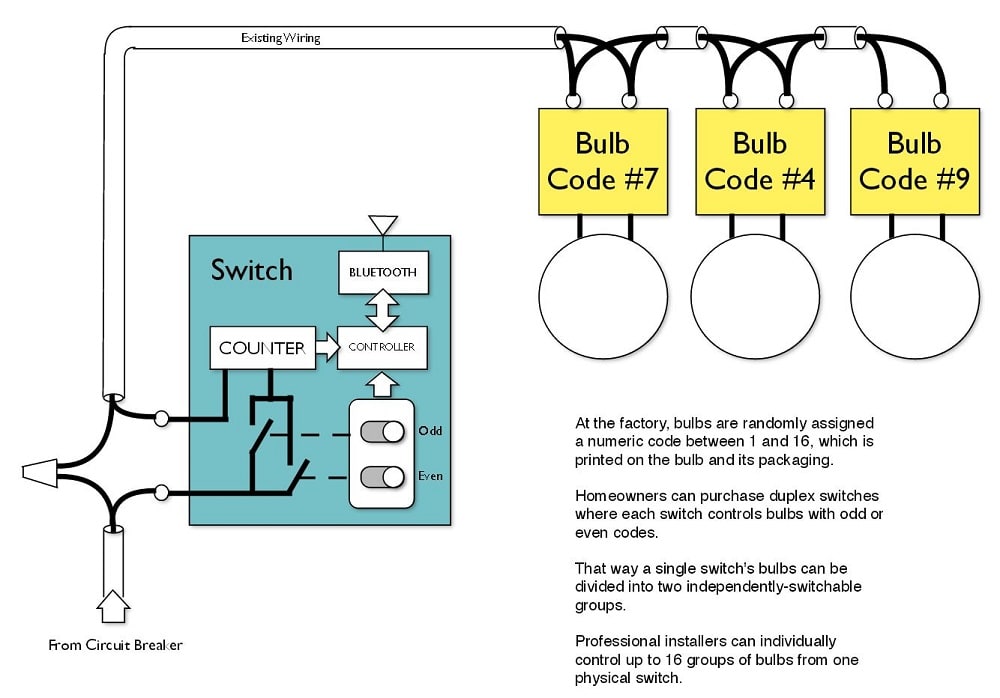The BriteDim™ system consists of smart light switches and smart bulbs. Both the bulbs and switches are backward compatible with existing equipment, but when used together they allow the power electronics built into most modern light bulbs to control the bulb's brightness within the bulb, rather than at the switch. This results in energy savings and a simpler architecture.
Each bulb is equipped with a low-power radio-frequency (RF) receiver, and each switch is supplied with a corresponding transmitter. In this way it is similar to several commercially-available lighting systems.
The problem with existing systems is that each bulb must be manually paired with the switch that controls it. Rather than requiring manual configuration, the BriteDim system takes advantage of the fact that all of the bulbs connected to a particular switch are powered on simultaneously with the load side of the switch.
Each compatible bulb features a Bluetooth LE receiver and a digital counter, in addition to the power electronics present in modern high-efficiency bulbs. Each compatible light switch contains a Bluetooth LE transceiver and a digital counter, as well as a small power supply capable of powering these components when electrical current is flowing through the switch. Most switches would also feature a knob or slider to control the brightness of the bulbs connected to the switch.
When a compatible switch is closed, the counter immediately begins counting the number of cycles of the alternating current flowing through it. At the same instant, any compatible bulbs connected to the switch begin counting the number of cycles of the alternating voltage applied to them. Meanwhile the bulbs begin a gradual ramp-up to full brightness. Shortly after power is turned on, the light switch transmits a brightness command—corresponding to the position of its brightness control—to any bulbs in range. Along with this brightness command is the value currently stored in the digital counter. Because the bulbs are connected to the same wiring as the switch, the values in their digital counters will be identical, and only those bulbs with identical counter values will respond to such a brightness command.
For bulbs equipped with light sources in multiple colors, the brightness command can include independently-variable values for each color component. This allows a switch to control the color as well as the brightness of the bulbs wired to it.
Finally, some users may want to control multiple bulbs on the same switch independently. To facilitate this, each bulb is factory programmed with a four-bit sub-address. The sub-address is printed both on the bulb and on its retail packaging, allowing sophisticated users and professional installers the option of addressing up to 16 independent groups of bulbs on a single switch. Consumers who simply want to change a switch from controlling all the lights in a room to having independent controls for two groups of bulbs would choose between odd- and even-numbered bulbs, and would buy a duplex switch that is preprogrammed to have one switch input control odd-numbered bulbs and the other even-numbered bulbs.
Like this entry?
-
About the Entrant
- Name:Frank Schmitt
- Type of entry:individual
- Patent status:none





